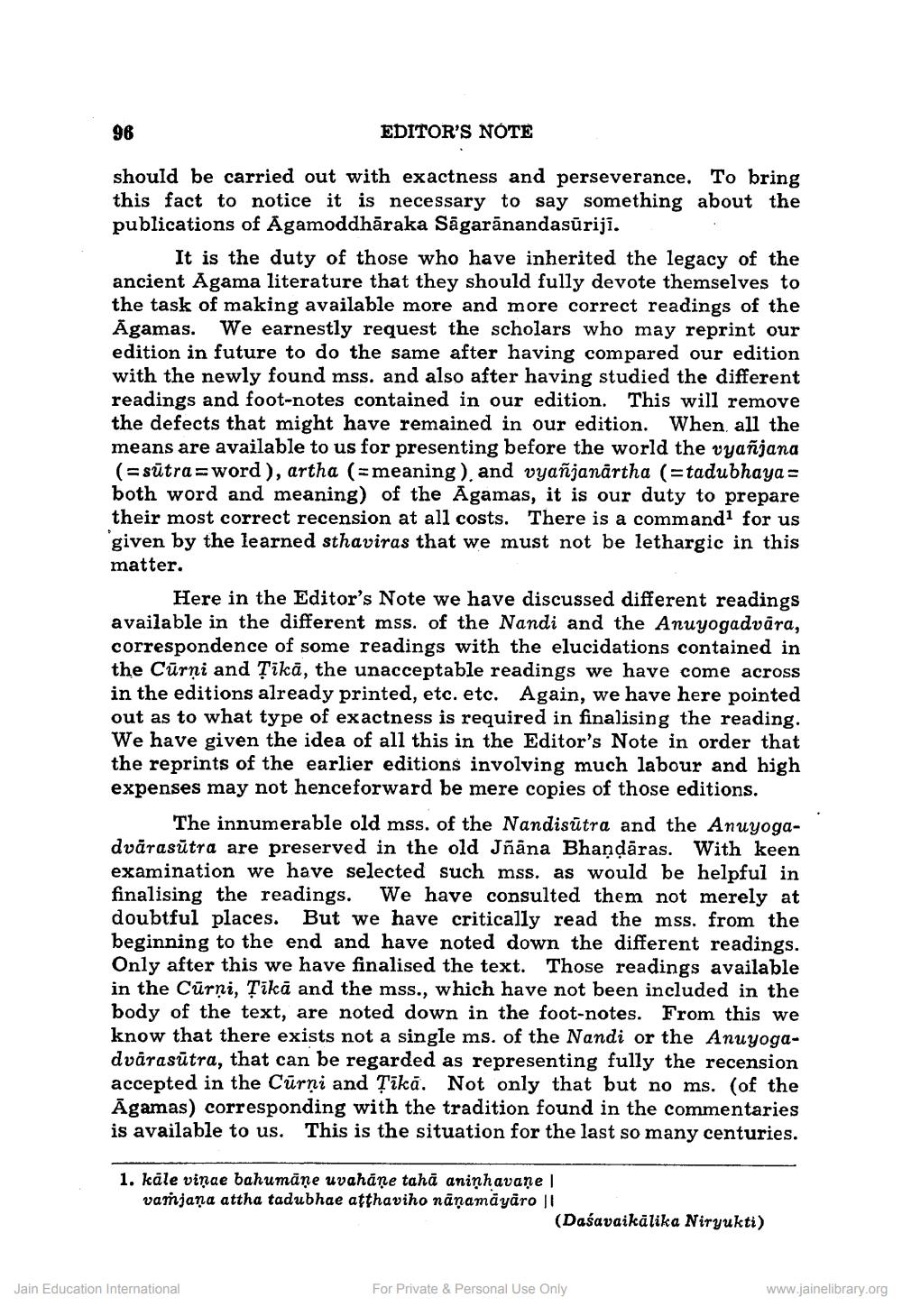________________
96
EDITOR'S NOTE
should be carried out with exactness and perseverance. To bring this fact to notice it is necessary to say something about the publications of Agamoddhāraka Sāgarānandasūriji.
It is the duty of those who have inherited the legacy of the ancient Agama literature that they should fully devote themselves to the task of making available more and more correct readings of the Āgamas. We earnestly request the scholars who may reprint our edition in future to do the same after having compared our edition with the newly found mss. and also after having studied the different readings and foot-notes contained in our edition. This will remove the defects that might have remained in our edition. When all the means are available to us for presenting before the world the vyañjana
(=sūtra=word), artha (=meaning), and vyañjanärtha (=tadubhaya = both word and meaning) of the Agamas, it is our duty to prepare their most correct recension at all costs. There is a commandi for us given by the learned sthaviras that we must not be lethargic in this matter.
Here in the Editor's Note we have discussed different readings available in the different mss. of the Nandi and the Anuyogadvara, correspondence of some readings with the elucidations contained in the Cūrni and Țikā, the unacceptable readings we have come across in the editions already printed, etc. etc. Again, we have here pointed out as to what type of exactness is required in finalising the reading. We have given the idea of all this in the Editor's Note in order that the reprints of the earlier editions involving much labour and high expenses may not henceforward be mere copies of those editions.
The innumerable old mss. of the Nandisūtra and the Anuyogadvārasūtra are preserved in the old Jñāna Bhandāras. With keen examination we have selected such mss. as would be helpful in finalising the readings. We have consulted them not merely at doubtful places. But we have critically read the mss. from the beginning to the end and have noted down the different readings. Only after this we have finalised the text. Those readings available in the Cūrņi, Tīkā and the mss., which have not been included in the body of the text, are noted down in the foot-notes. From this we know that there exists not a single ms. of the Nandi or the Anuyogadvarasūtra, that can be regarded as representing fully the recension accepted in the Cūrni and Țikā. Not only that but no ms. (of the Agamas) corresponding with the tradition found in the commentaries is available to us. This is the situation for the last so many centuries.
1. kāle viņae bahumāne uvahane tahā aninhavaņe vamjana attha tadubhae atthaviho nānamāyāro !
(Daśavaikälika Niryukti)
Jain Education International
For Private & Personal Use Only
www.jainelibrary.org




